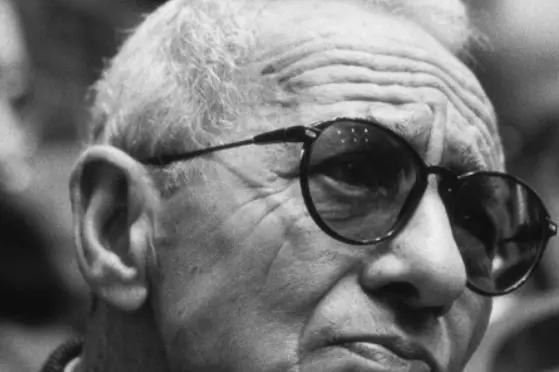In memory of Luigi Pintor, that meeting in Cagliari in 1993
He had been invited by a group of young men and women who had created the Ipogeo association, which was committed to the rediscovery and valorization of the city's monuments.Per restare aggiornato entra nel nostro canale Whatsapp
"Simplicity is a boundless ambition and the essence of freedom," is one of the many messages left by Luigi Pintor, whose birth centenary is being celebrated this year. And with simplicity, Luigi Pintor arrived in Cagliari at the invitation of a group of young men and women who had founded the Ipogeo association, committed to the rediscovery and valorization of the city's monuments, starting with the crypt of Santa Restituta in the Stampace neighborhood. These young people, now over fifty, wanted to contribute to the cause of culture, and at that moment, Gianni Filippini, councilor and journalist, offered crucial support. Thus, the first edition of Monumenti Aperti was born in 1997 (although the project took shape the previous year). Monumenti Aperti is the fruit of painstaking preparatory work consisting of Sunday guided tours of the Crypt (the announcements on the Cagliari page of L'Unione Sarda were essential), discussions, weekly meetings, and gatherings to commemorate events and figures from Sardinian history.
The arrival in Cagliari
Luigi Pintor, founder of Il Manifesto, writer, and "a leading intellectual of the historic left," accompanied by his wife Isabella, arrives in Cagliari to remember his brother Giaime, 50 years after his death. The meeting takes place in the crypt of Santa Restituta on November 30, 1993. For the young people of Ipogeo, it is an emotion never forgotten. It had not been easy to find and convince Pintor. No cell phones, the process was "artisanal." The phone call to Il Manifesto's switchboard, the first contact with Pietro De Gennaro, a journalist close to Luigi who immediately becomes a staunch supporter of the initiative. He speaks with the "director," urging the organizers not to lose hope. De Gennaro is always optimistic and reassuring, and finally, when all hope seemed lost, comes the definitive confirmation, the most wonderful news: Luigi Pintor is coming to Cagliari to commemorate Giaime. Fragments of memories: the "hypogeans" at the airport welcome guests, who are then escorted to the Hotel Moderno, a stately building under the porticoes of Via Roma, now much neglected, where they will be staying. It's a beautiful sunny afternoon.
The atmosphere
That remarkable evening of November 30, 1993: the magical atmosphere within the crypt, a place steeped in history since the late Punic and Roman eras, and the common thread linking the story of Giaime Pintor, who died at the age of 24 following a bomb explosion while attempting to reach Rome to fight Nazi-Fascism, to the past of the underground space, which had been a refuge for Cagliari residents fleeing the devastating bombings of the winter and spring of 1943. Actor Mario Faticoni masterfully reads a montage of texts curated by Massimiliano Messina (one of the association's founders): a dramatic idea that blends political essays, memoirs, and poetry with references to the literary experiences of Giaime Pintor, Rainer Maria Rilke, Luigi Pintor, and Hermann Hesse. The music is by Alessandro Olla. Literary critic Giovanni Mameli and historian Giangiacomo Ortu contribute. Luigi intervenes, greets, thanks, with "simplicity", in his own way, with words that still remain in the hearts of those who have heard them.
The dinner
The "aftermath" is a dinner at the Saint Remy restaurant. Other scenes are deeply imprinted in the memories of the young people of Ipogeo. With Pintor and his wife, along with Armando Serri, Vito Biolchini, and Massimiliano Messina, are their Sardinian friends from Il Manifesto, Marco Ligas and Francesco Tronci. Unexpectedly, a lesson unfolds, delivered with great style and clarity, on the history of twentieth-century Italy: communism, newspapers, peace and war, the role of intellectuals, Cagliari and Sardinia. And that judgment is expressed in a clear, cutting tone: "There were four tragedies in the twentieth century: the two world wars, the Holocaust, and the demolition of the Poetto huts." Luigi Pintor, like "a coastal animal," had spent (as he writes in "Servabo," a vivid self-portrait) joyful days on the Cagliaritan beach. And on Via Fiume, between Buoncammino and Castello, there is a half-hidden marble plaque commemorating the location of the house where Luigi and Giaime Pintor lived.
